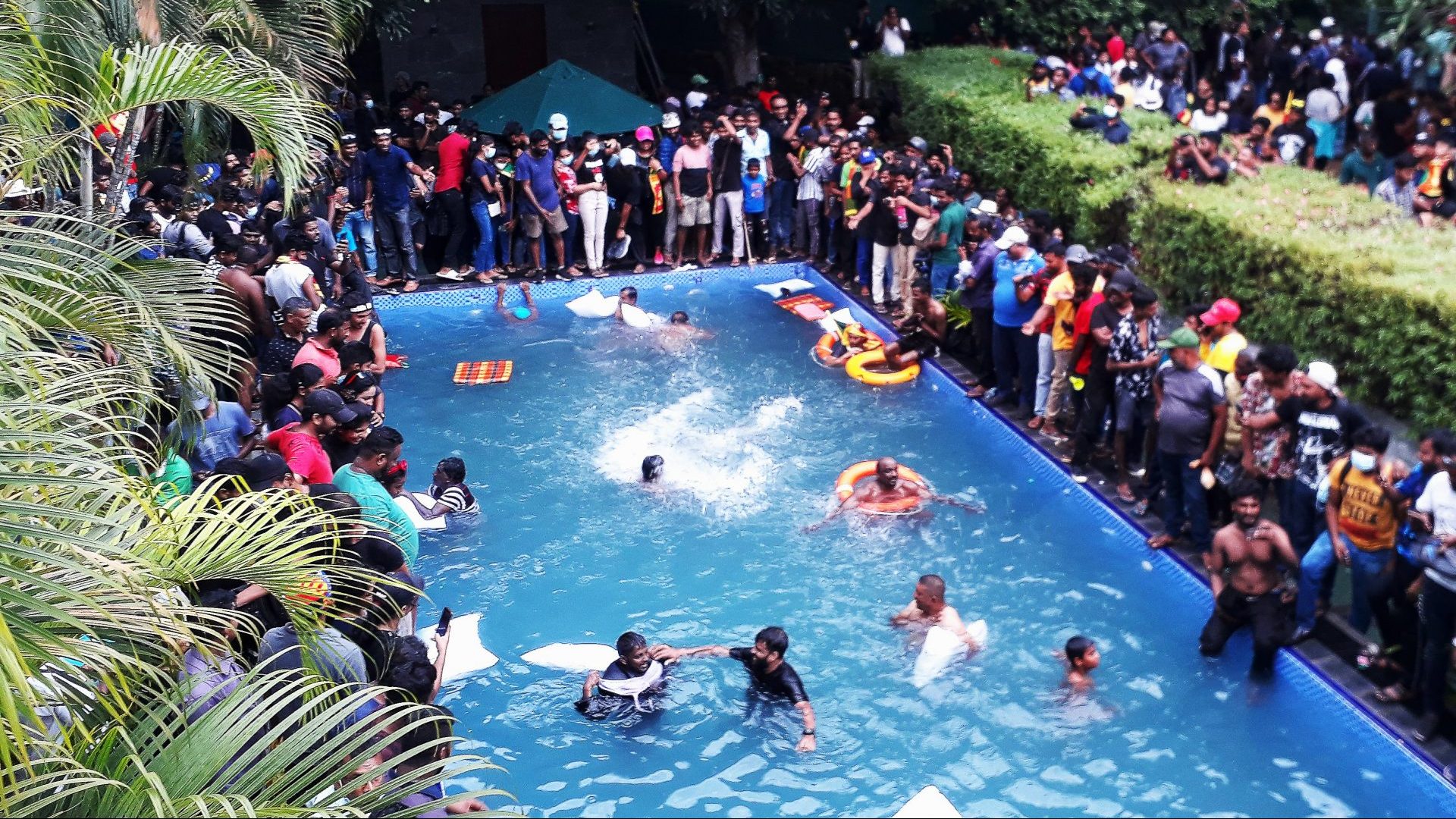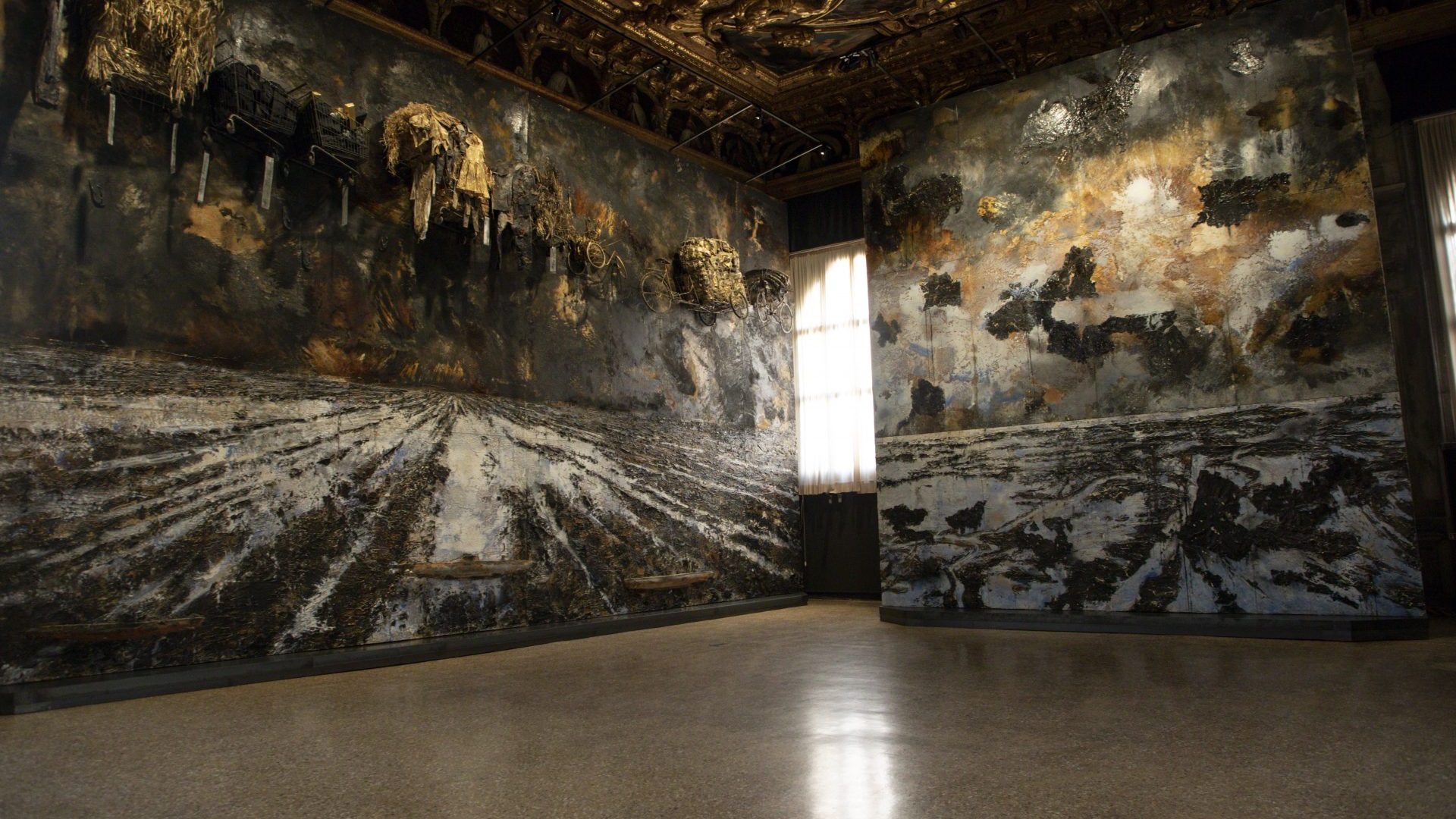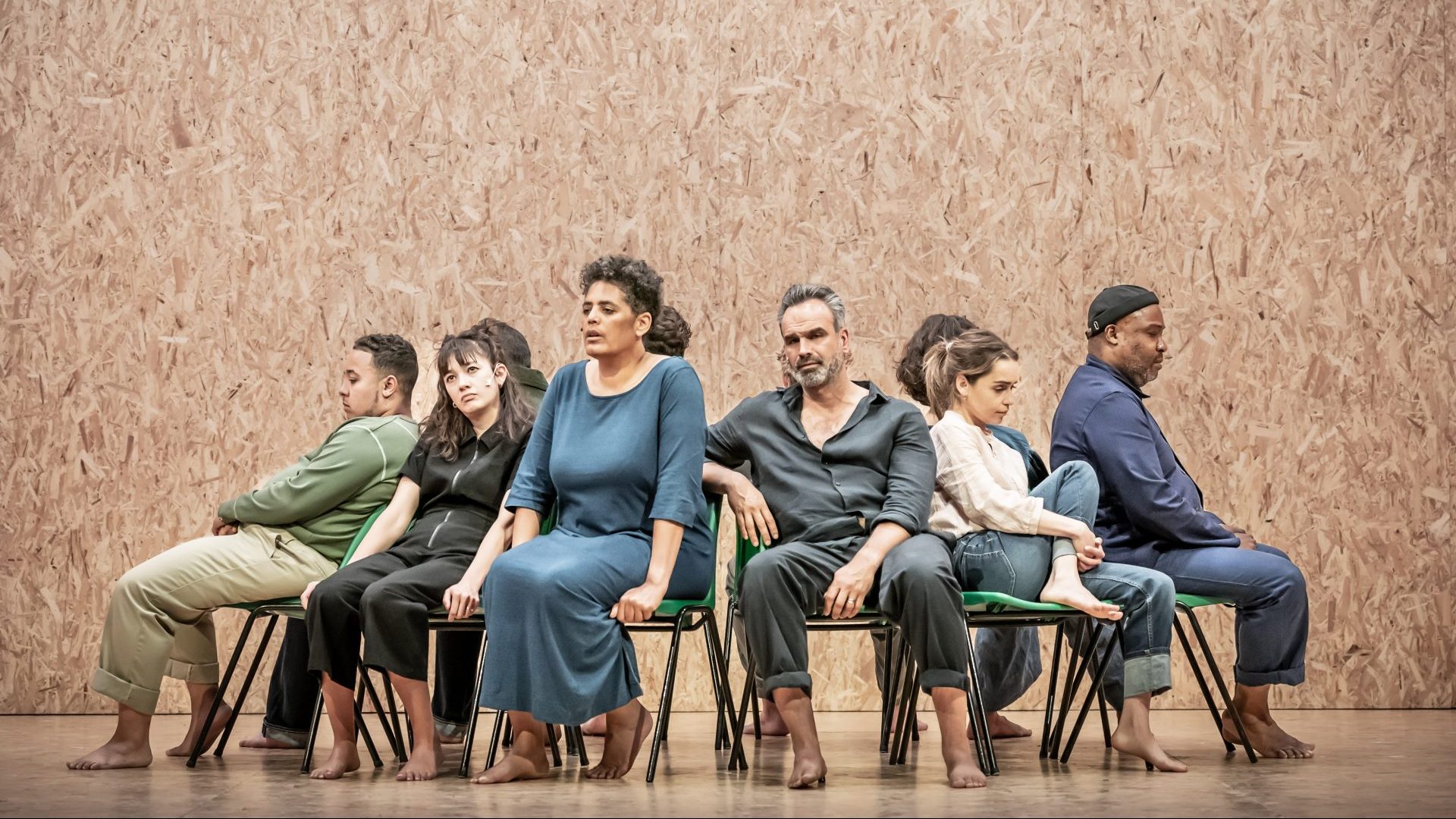Genuinely memorable images are becoming increasingly rare in a world where the news cycle spins like a steam turbine. There was one possible exception at the start of this month when protesters stormed the official residence of the Sri Lankan president, Gotabaya Rajapaksa, and pictures and video were released of them having a dip in his swimming pool. The symbolism was powerful yet at the same time almost endearing, ebullience among the anger, a way of “sticking it to the man” involving joy and laughter, an event that had picture editors high-fiving each other across the world.
Yet once we’d scrolled past the frolickers in chlorinated blue and on to the next hair-raising, home-grown political diversion, Sri Lanka remained in impossible turmoil and smoke was still billowing from the presidential residence after the protesters had hauled themselves from the water and left.
With inflation running at well over 50%, fuel stocks almost dry, pharmacy
cabinets empty and no foreign currency with which to conjure urgently needed imports, Sri Lanka is in a dreadful predicament from which it’s hard to see any kind of long-term solution, let alone a quick fix, even after Rajapaksa submitted his resignation letter from a Singapore bolthole.
Since the end of the 25-year civil war in 2009, the consequences of a series of misguided political decisions, not least over-focusing on home-produced goods and neglecting imports, have been exacerbated by the tourist trade on which the nation depends being reduced to practically nothing during the pandemic.
The direness of the situation also threatens to refuel ethnic tensions between the majority Sinhalese population, from which the Rajapaksas are drawn, and the minority Tamils whose rebel army was defeated in 2009 after a vicious quarter-century of conflict.
It feels in slightly poor taste to say that the current conditions in Sri Lanka make the publication of a new novel timely, but given that Shehan Karunatilaka’s The Seven Moons of Maali Almeida is the most significant work of Sri Lankan fiction in a decade, the timing can’t really be ignored. Not least because the previous most significant novel was 2010’s Chinaman – also by Karunatilaka.
Chinaman followed a jaded, booze-soaked Sri Lankan cricket writer as he obsessively sought a spin bowler named Pradeep Mathew who had briefly shone during the 1980s thanks to a revolutionary form of delivery he developed, then vanished into an obscurity so deep the writer wondered
whether he might even have imagined the whole thing. While Chinaman was a great cricket novel – great enough to come second in a list of the greatest cricket books of all time selected by Wisden, no less – it was much more than that. It was a novel of Sri Lanka itself, satirical, incisive, at times
horrifying, but written with warmth and wit and good enough not only to win the Commonwealth prize but also the DSC prize for South Asian Literature.
The world of The Seven Moons of Maali Almeida is rooted far deeper in the blood-soaked legacy of recent Sri Lankan history. In the intervening dozen years, Karunatilaka has matured as a writer to produce a novel that’s more controlled, more tightly written than the sprawling Chinaman, an eye-opening book that should certainly be a strong contender for the Man International Booker prize.
As the title implies, the events chronicled in the novel span a single week in 1990, a time when the Sri Lankan government was engaged in a war with the Tamil rebel organisation the LTTE. An ironically named Indian peacekeeping force, invited into the country by the government, was
running riot in the north while the JVP, armed communists drawn from the student community, was waging a campaign to seize power by force in the capital, Colombo.
Death squads from all factions roamed the country, the UN wrung its hands to no effect and dubious foreign NGOs and capitalists flocked to the island to take advantage and make a quick fortune. Most alarmingly, people disappeared in huge numbers, some of them only tangentially connected to the conflict, others not at all. Very few were ever seen again, dead or alive.
It’s among this chaos that Maali Almeida tries to make a living as a news photographer, stringer and fixer for a range of organisations from the Sri Lankan army to the Associated Press, hoping that if he works for as many sides as possible it will suggest he favours none of them. When the book opens with Maali coming to terms with his own death, it’s clear this risky approach hasn’t worked.
The Seven Moons of Maali Almeida is part ghost story, part whodunnit, part political satire. As Maali seeks to find out who killed him and how it happened, he strives posthumously to protect his boyfriend, DD, the son of a government minister, and his best friend, Jaki, the minister’s niece. The fortunes of everyone he loves rest on the fate of a box of photographs that incriminate leading figures from all sides that Maali had hidden away as an
insurance policy.
The afterlife dreamed up by Karunatilaka is unprepossessing, bureaucratic and dispirits the spirits queuing in front of a series of windows to have their deaths registered. Imagine the scene that greets David Niven’s RAF pilot in Powell and Pressburger’s A Matter of Life and Death and set it in the kind of shabby 1960s council building where you’d go to have your housing benefit claim assessed. There are no harp-plucking angels here, no holy choir invisible, just a bunch of weary bureaucrats who’ve heard it all before.
When he reaches the front of the line Maali realises he’s being processed by an academic assassinated a couple of years earlier by Tamil extremists for the crime of being a Tamil moderate. She informs him he is in a place called the In-Between and must reach something called “the Light” within the
timeframe of seven moons.
“You were led to believe death was sweet oblivion,” he’s told, “and you were wrong on both counts.”
The task sends Maali on a posthumous reckoning with a range of characters, from a gruesome duo whose job it is to dispose of bodies and body parts dumped at their door in binbags, to malevolent government ministers up to their necks in corruption. If anything shows what a dark place Sri Lanka was at the turn of the 1990s it’s how the least frightening aspect of this world is the constant presence all around of ghosts and demons.
Among the best moments of the book are the conversations Maali has
with these ghosts. In a similar way to George Saunders’ Booker prize-winning Lincoln in the Bardo, the afterlife appears to contain souls locked into a kind of purgatory who are bewildered by and pithily wry about Sri Lanka, its history and the times they lived through.
The ghost of a cleric holed up on the roof of a building where people are
tortured to death, for example, tells Maali: “The Portuguese assumed the
missionary position. The Dutch took us from behind. By the time the Brits
came along we were already on our knees with our hands behind our backs and our mouths open.”
The spirits of two suicides talking on the roof of the hotel and casino where
Maali spent his last evening are heard discussing why Sri Lanka has such a
whopping suicide rate. “It’s because we have just the right amount of education to understand the world is cruel,” says one, “and just enough corruption and inequality to feel powerless against it.”
Amid the dryness, satire and weary lamentations on the state of Sri Lanka
there is genuine heart to this novel. Grief and loss are explored with subtlety among the chaos, most effectively in Maali’s interactions with DD and Jaki as he strives to direct them to the box of photographs that could change everything and keep them from danger.
Souls in Karunatilaka’s afterlife can travel on the wind towards anyone who speaks their name, a beautiful image that also serves as a reminder that talking about the people we lose prevents them from being forgotten. It’s comforting to think that if there is an afterlife, speaking of our loved ones draws their spiritual essence towards us on the breeze.
In this way Maali can influence the living world in the limited ways available to a ghost seeking to resolve unfinished business rudely interrupted by its death before leaving for the next stage. It’s beautifully and convincingly done, building to a heartrending climax seeking order among chaos.
The Seven Moons of Maali Almeida is a wonderful book about Sri Lanka, friendship, grief and the afterlife, about which Karunatilaka writes, “The answer is Yes, and The Answer is Just Like Here But Worse”. If you learn
anything from this outstanding novel, when you head down that tunnel
towards the light be prepared for a queue when you get there.
The Seven Moons of Maali Almeida by Shehan Karunatilaka is published on August 4 by Sort Of Books




